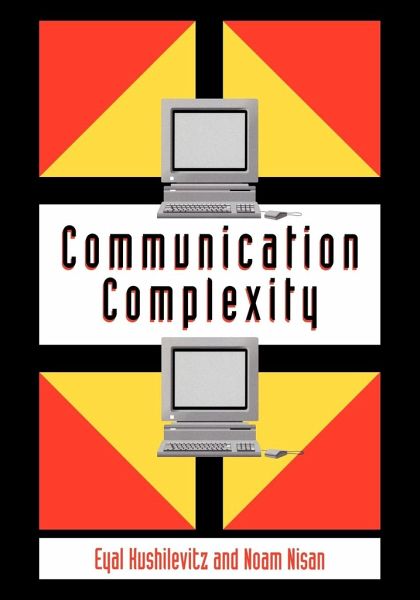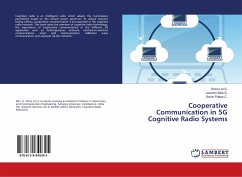
Communication Complexity
Versandkostenfrei!
Versandfertig in 1-2 Wochen
53,99 €
inkl. MwSt.

PAYBACK Punkte
27 °P sammeln!
Surveys the mathematical theory and applications such as computer networks, VLSI circuits, and data structures.Many aspects of the internal and external workings of computers can be viewed as a series of communication processes. Communication complexity is the mathematical theory of such communication processes. It is also often used as an abstract model of other aspects of computation. This book surveys this mathematical theory, concentrating on the question of how much communication is necessary for any particular process. The first part of the book is devoted to the simple two-party model i...
Surveys the mathematical theory and applications such as computer networks, VLSI circuits, and data structures.
Many aspects of the internal and external workings of computers can be viewed as a series of communication processes. Communication complexity is the mathematical theory of such communication processes. It is also often used as an abstract model of other aspects of computation. This book surveys this mathematical theory, concentrating on the question of how much communication is necessary for any particular process. The first part of the book is devoted to the simple two-party model introduced by Yao in 1979, which is still the most widely studied model. The second part treats newer models developed to deal with more complicated communication processes. Finally, applications of these models, including computer networks, VLSI circuits, and data structures, are treated in the third part of the book. This is an essential resource for graduate students and researchers in theoretical computer science, circuits, networks and information theory.
Review quote:
'I strongly recommend this book to everybody interested in this topic.' Computing Reviews
Table of contents:
Preface; Part I. Two-Party Communication Complexity: 1. Basics; 2. More on covers; 3. Randomization; 4. Advanced topics; Part II. Other Models of Communication: 5. The communication complexity of relations; 6. Multiparty communication complexity; 7. Variable partition models; Part III. Applications: 8. Networks, communication, and VLSI; 9. Decision trees and data structures; 10. Boolean circuit depth; 11. More boolean circuit lower bounds; 12. Time and space; 13. Randomness; 14. Further topics; Index of notation; Appendix. Mathematical background; Answers to selected problems; Bibliography; Index.
Many aspects of the internal and external workings of computers can be viewed as a series of communication processes. Communication complexity is the mathematical theory of such communication processes. It is also often used as an abstract model of other aspects of computation. This book surveys this mathematical theory, concentrating on the question of how much communication is necessary for any particular process. The first part of the book is devoted to the simple two-party model introduced by Yao in 1979, which is still the most widely studied model. The second part treats newer models developed to deal with more complicated communication processes. Finally, applications of these models, including computer networks, VLSI circuits, and data structures, are treated in the third part of the book. This is an essential resource for graduate students and researchers in theoretical computer science, circuits, networks and information theory.
Review quote:
'I strongly recommend this book to everybody interested in this topic.' Computing Reviews
Table of contents:
Preface; Part I. Two-Party Communication Complexity: 1. Basics; 2. More on covers; 3. Randomization; 4. Advanced topics; Part II. Other Models of Communication: 5. The communication complexity of relations; 6. Multiparty communication complexity; 7. Variable partition models; Part III. Applications: 8. Networks, communication, and VLSI; 9. Decision trees and data structures; 10. Boolean circuit depth; 11. More boolean circuit lower bounds; 12. Time and space; 13. Randomness; 14. Further topics; Index of notation; Appendix. Mathematical background; Answers to selected problems; Bibliography; Index.














